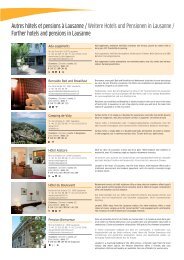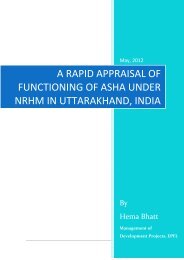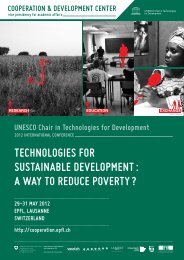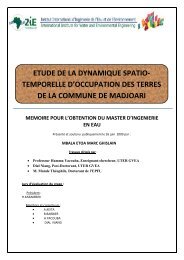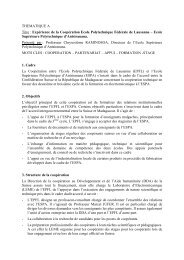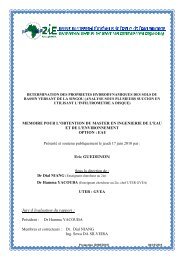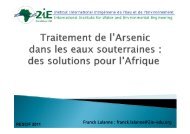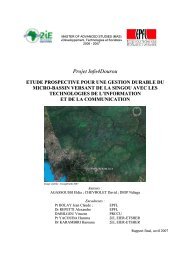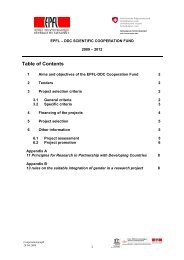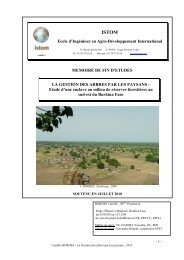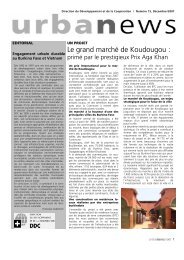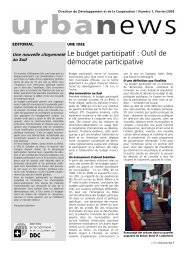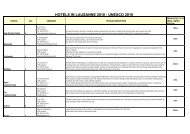CDRR 2012 Program Brochure.pdf - Cooperation at EPFL
CDRR 2012 Program Brochure.pdf - Cooperation at EPFL
CDRR 2012 Program Brochure.pdf - Cooperation at EPFL
Create successful ePaper yourself
Turn your PDF publications into a flip-book with our unique Google optimized e-Paper software.
GENERAL INFORM<strong>at</strong>iON<br />
Introduction<br />
In recent years, n<strong>at</strong>ural disasters have been the<br />
subject of increased awareness and mobiliz<strong>at</strong>ion<br />
from many different actors: scientists, IOs,<br />
NGOs, and st<strong>at</strong>es.<br />
Clim<strong>at</strong>e change is one of the most significant<br />
challenges th<strong>at</strong> will confront the world over the<br />
next decades and a key factor in the growing<br />
number of hydrological and meteorological<br />
disasters.<br />
Although no region of the world is completely<br />
safe, the poorest countries are by far the most<br />
vulnerable due to their lack of appropri<strong>at</strong>e<br />
resources.<br />
The North-South scientific partnership and<br />
strengthening of the capabilities of scientists<br />
and other stakeholders in developing countries<br />
is essential in the struggle to improve disaster<br />
risk reduction.<br />
In addition, training needs - <strong>at</strong> all levels -<br />
remain considerable and must be seen as a primary<br />
objective in disaster reduction str<strong>at</strong>egies.<br />
Objectives<br />
The third edition of the Certific<strong>at</strong>e of Advanced<br />
Studies in Disaster Risk Reduction (<strong>CDRR</strong>)<br />
proposes a continuing educ<strong>at</strong>ion program for<br />
professionals from Southern and Northern<br />
countries who already have significant experience<br />
in disaster risk reduction or a rel<strong>at</strong>ed field such<br />
as clim<strong>at</strong>e change adapt<strong>at</strong>ion or development.<br />
The <strong>CDRR</strong> aims to strengthen the capabilities<br />
of participants in the field of disaster risk<br />
reduction, especially with regards to n<strong>at</strong>ural<br />
disasters.<br />
Particular emphasis is placed on the issue<br />
of clim<strong>at</strong>e change as a factor in the increase<br />
of extreme hydrological, clim<strong>at</strong>ological or<br />
meteorological events, and which can have<br />
impacts on long-term sustainable development.<br />
The program endeavors to build strong<br />
synergies between disaster risk reduction and<br />
clim<strong>at</strong>e change mitig<strong>at</strong>ion and adapt<strong>at</strong>ion.<br />
It favors an integr<strong>at</strong>ed and interdisciplinary<br />
approach, focusing on the reduction of<br />
vulnerabilities and strengthening the capacities<br />
of popul<strong>at</strong>ions <strong>at</strong> risk.<br />
The program provides participants with<br />
a theoretical component to improve their<br />
knowledge of the issues complemented with a<br />
field-oriented approach to develop their skills in<br />
practice.<br />
Upon completion of the program, participants<br />
will be familiar with n<strong>at</strong>ural disaster risk<br />
management.<br />
They will be in a position to:<br />
> Identify and assess disaster risks using risk<br />
management approaches;<br />
> Interpret the current results of scientific<br />
research on clim<strong>at</strong>e change and its challenges<br />
to n<strong>at</strong>ural hazards and identify appropri<strong>at</strong>e<br />
measures in a specific situ<strong>at</strong>ion;<br />
CAS IN DISASTer RISk ReDUCTION <strong>2012</strong> 1



